After recently reviewing Safari Ltd.’s Insects TOOB and having previously reviewed CollectA’s Mini Insects and Spiders tube, I decided to follow them up with an overview of Mojö Fun’s 2024 Insects & Spiders Tube. I didn’t have high hopes for this set. Promo pics gave the impression of typical bin/dollar store-style cheap insects. And while such figures were probably the basis for several of these, they have slight differences and I believe these are all original for Mojö Fun. Having collected numerous bin sets of the years, I can say I have never seen these exact sculpts used previously. The plastic is stiff and the sculpt is often smooth. The figures are all stamped with ‘Mojö © 2024’ on the underside. Because most of these are generic, I won’t make an attempt at identifications in most cases. I may offer some thoughts or ideas, but do not consider those ‘definitive’. Like with the aforementioned Safari TOOB, I will make group pics based on higher-level organization.

Aranea (spiders)
First up is the lone arachnid, a tarantula. What’s interesting about this figure is that it captures the same pose as Mojö Fun’s 2019 red-kneed tarantula in their standard Wildlife line! The color is different however. Promo pics made the highlights look more blue than they are in hand. Based on the promo pics, I wondered if it was modeled after the cobalt blue tarantula (Cyriopagopus lividus) but in-hand it looks like something in the genus Aphonopelma.
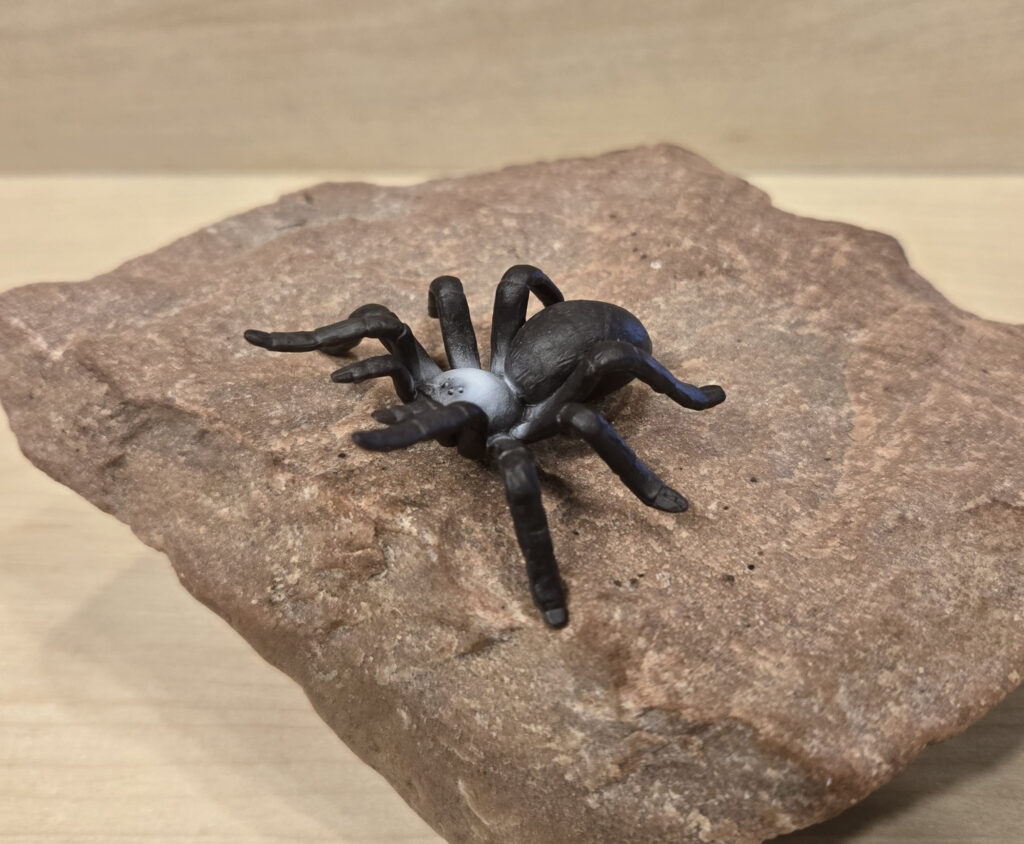
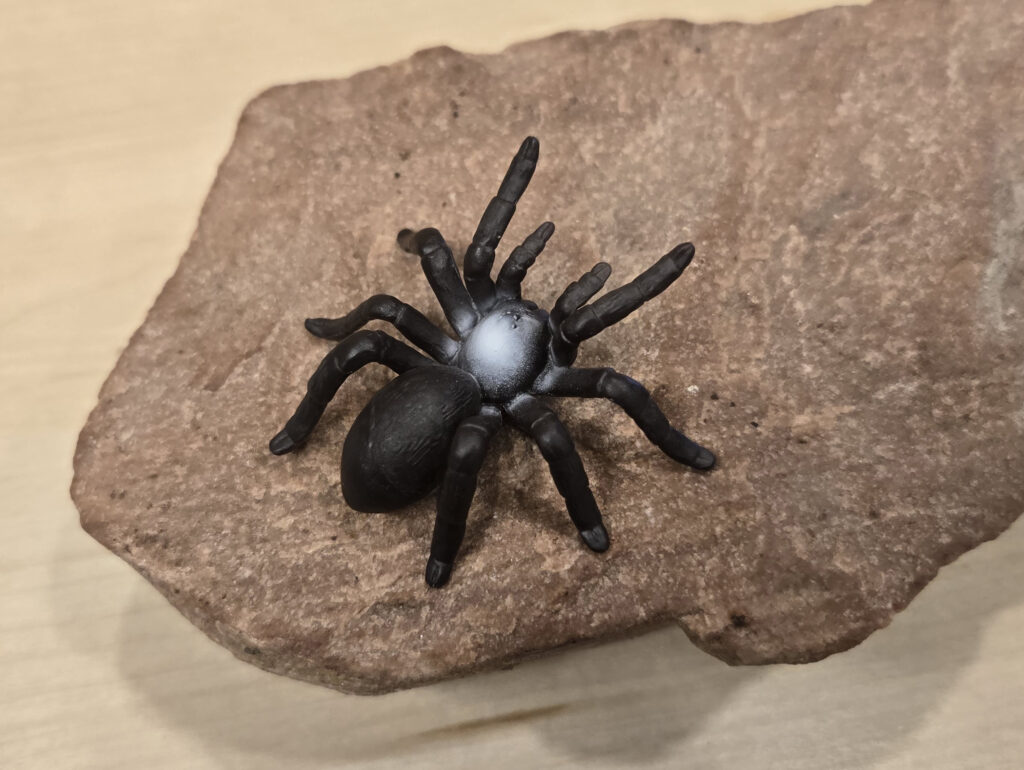
Chilopoda (centipedes)
Next is the centipede. This was a pleasant surprise. It certainly is not the same sculpt used so commonly by Innovative Kids, Safari Ltd., K&M International, and so many others. For starters it lacks the two beady eyes. It also possesses well-defined clawed maxillipeds (mandibles), something that bin-style figures typically lack. While generic, it was probably based on Scolopendra.
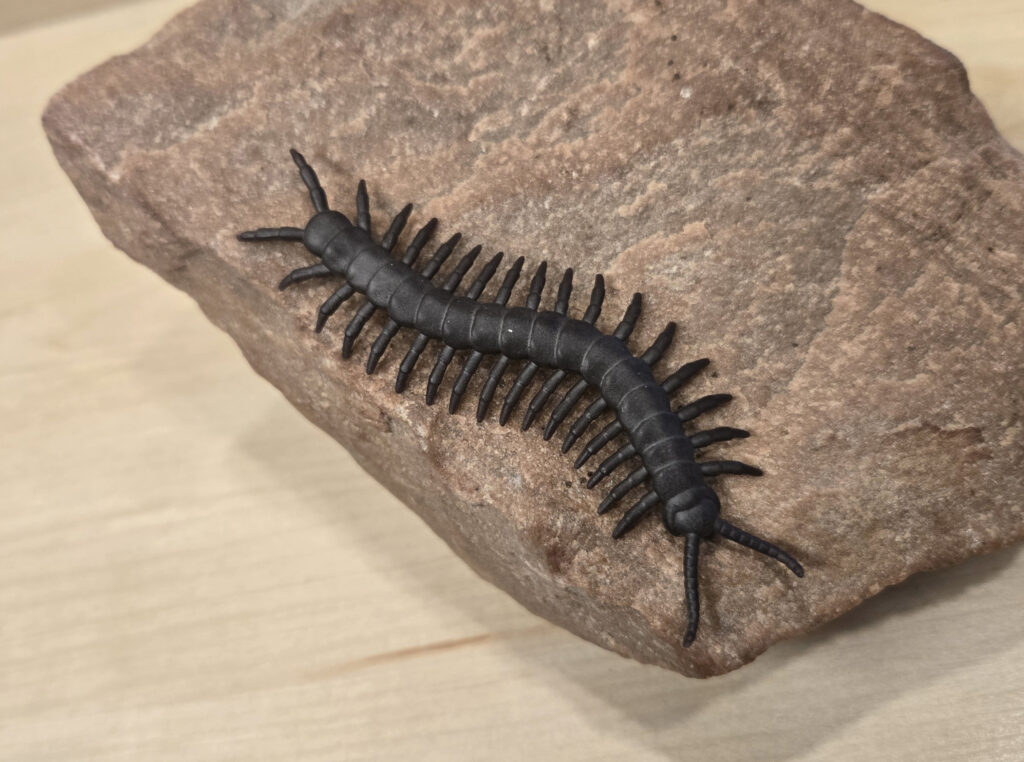
Odonata (dragonflies and damselflies)
We start the insects with a generic green dragonfly. One of the interesting features of this figure is the paired terminal abdominal segments (cerci), something not typically seen in bin-style figures.
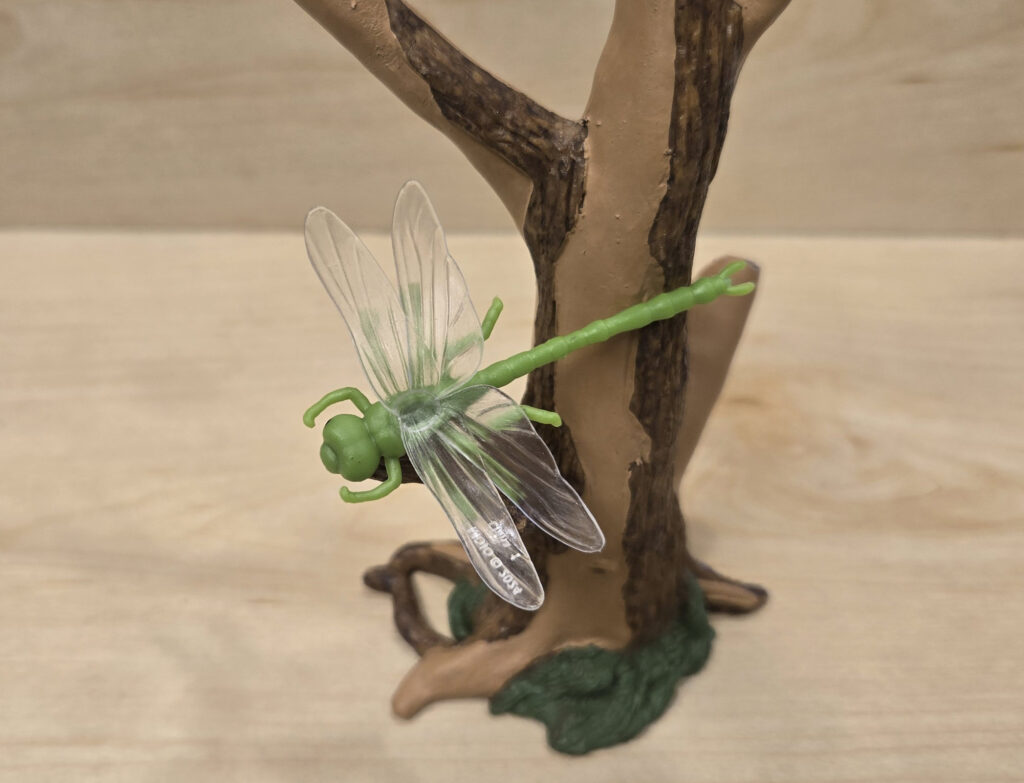
Orthopteroids (grasshoppers, mantids, and kin)
Next up are the two orthopteroids, a grasshopper and mantis. These are as about as generic as one can get, and while they may be original for Mojö Fun, they were clearly based on earlier bin-style figures.
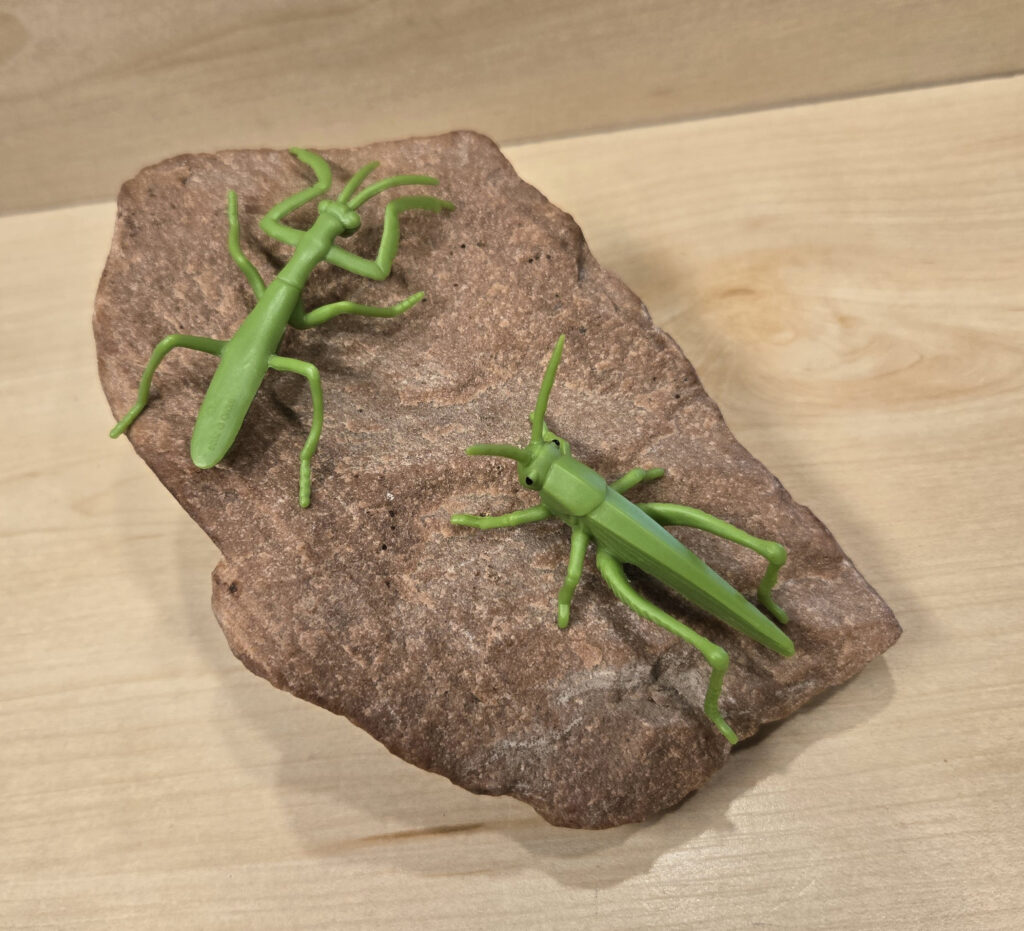
Coleoptera (beetles)
Our next insects are the beetles. The ladybug follows the trend of the mantis and grasshopper and was clearly based on earlier bin-style figures, even if the sculpt was refined for Mojö Fun. It is similar to the Safari model, but smoother. The spots on the Safari figure are actually both sculpted and painted, while on this Mojö model they are only painted. The other beetle, now that is an interesting one! I spent the better part of my 20s and 30s studying scarabaeoid beetles, and I know an aphodiine dung beetle when I see one! The body form, short antennae with closed lamellae, striated elytra, explanate pronotum, and smooth hind tibia, this was certainly influenced by something in the tribe Eupariini and possibly one of the myrmecophilous species! This was really a surprise!
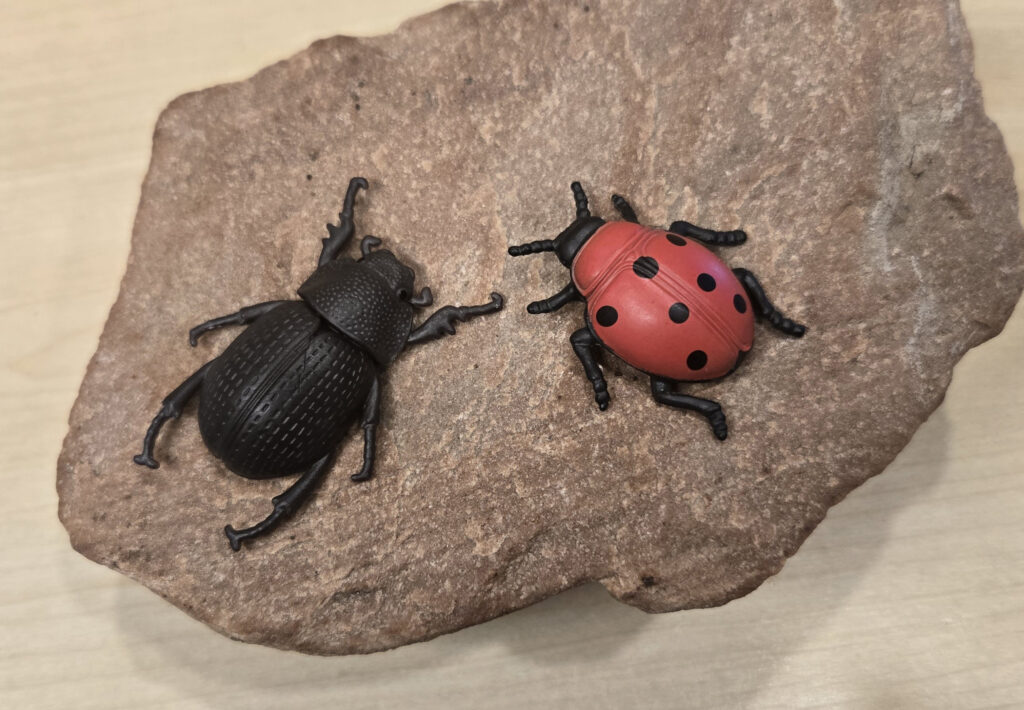
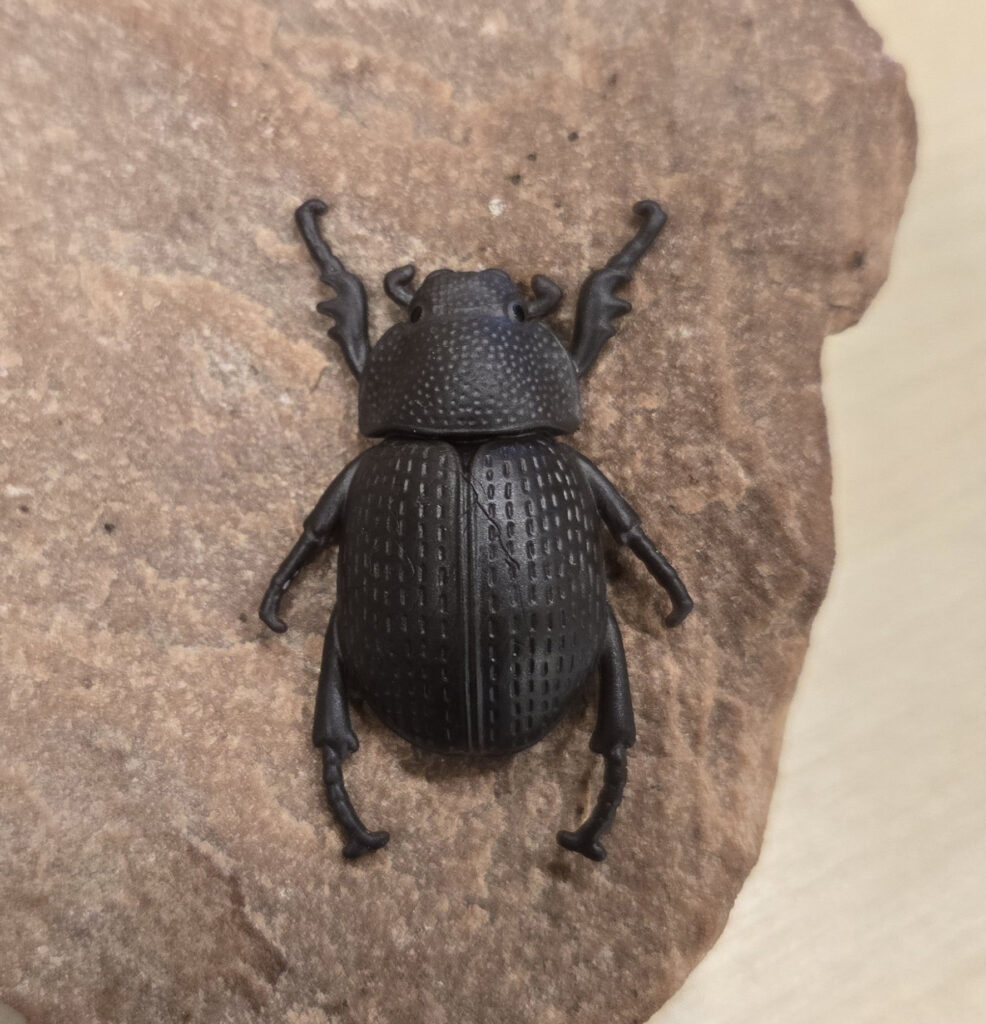
Lepidoptera (butterflies and moths)
Next we get to the lepidopterans. The swallowtail caterpillar follows the same trend as early bin-style figures, such as that seen in Safari’s TOOB. The two adult butterflies are interesting. One is sculpted as a swallowtail and painted in a bold black and yellow pattern. I tried to snoop around and see if I could find anything in nature that even closely resembles this. The best I could find is the queen page, Papilio androgeus. The other butterfly looks like it may have been modeled after a monarch, but look closely…it’s wings are transparent! Butterflies in the tribe Ithomiini possesses clear wings, but the shape of their wings looks nothing like this. Another thing I should point out is that both butterflies have four legs! This would work great for the monarch-looking butterfly but would be wrong for the swallowtail.
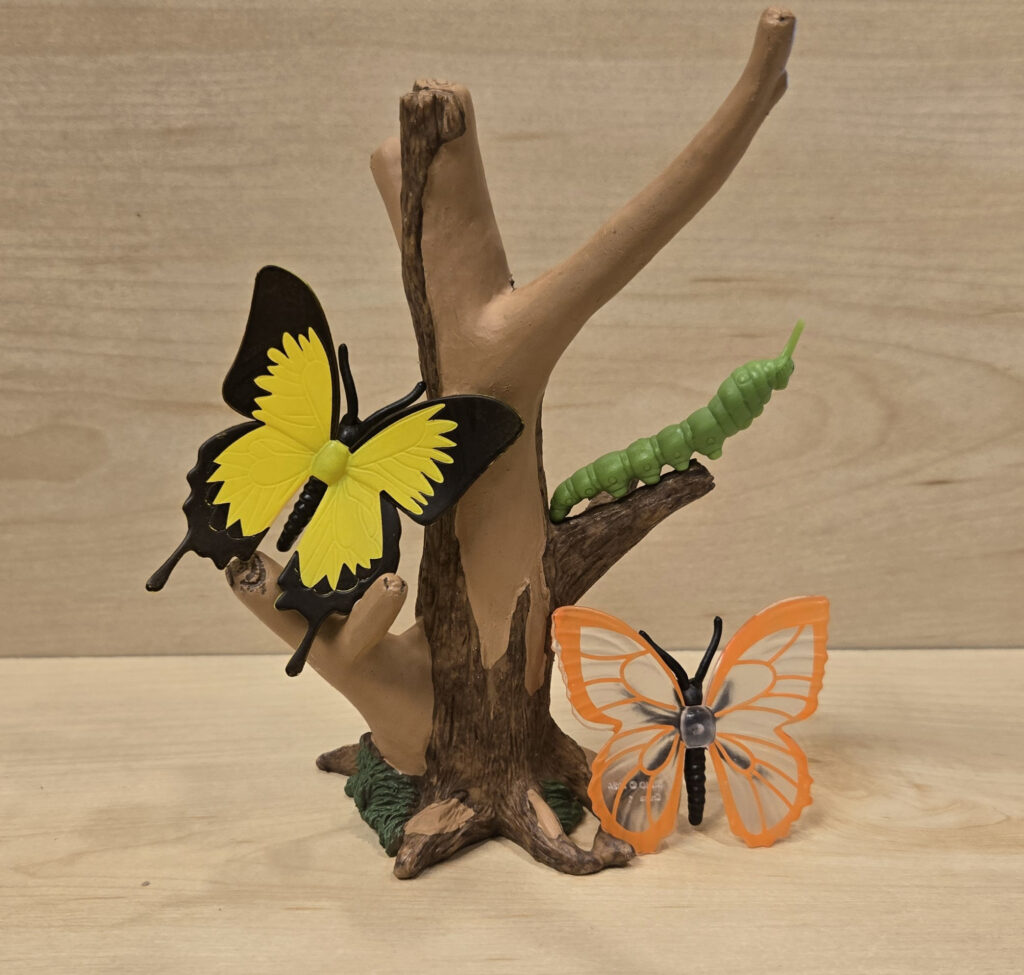
Hymenoptera (bees, ants, and wasps)
Lastly we have the hymenopterans, represented by a bumble bee and an ant. The ant was influenced by earlier bin-style sets, and while the bumble bee may have been also, it has some interesting attributed to it. For starters, it’s a little larger and more refined, and has defined wing venation (which isn’t far off from the real thing!). But what I really like about it is the extended proboscis, as if it is actively taking nectar from a flower!
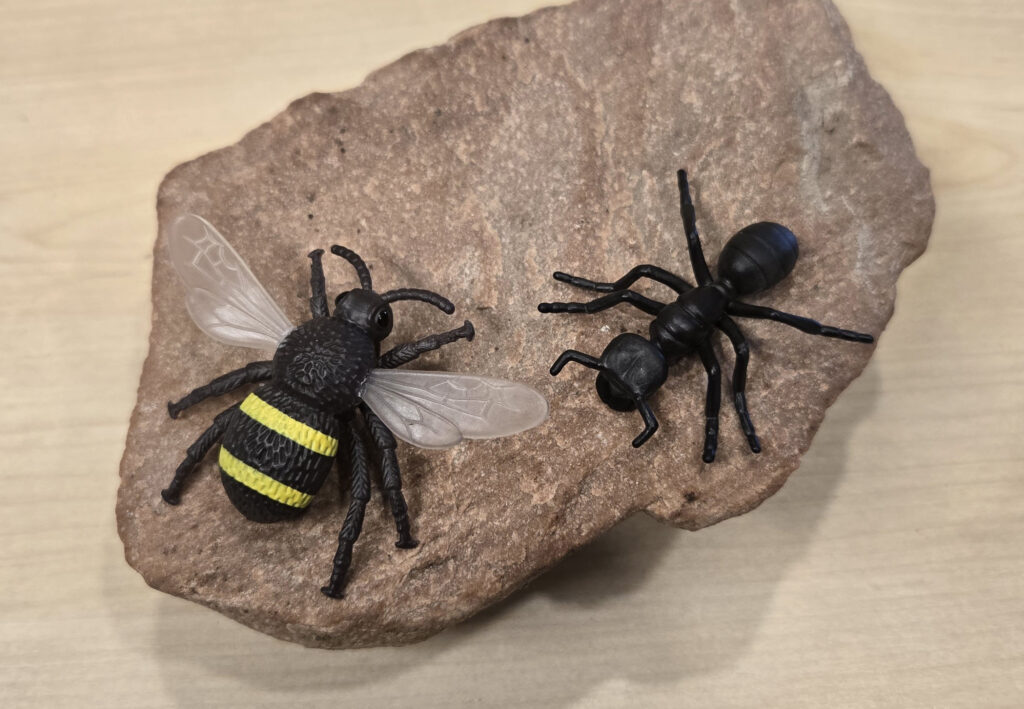
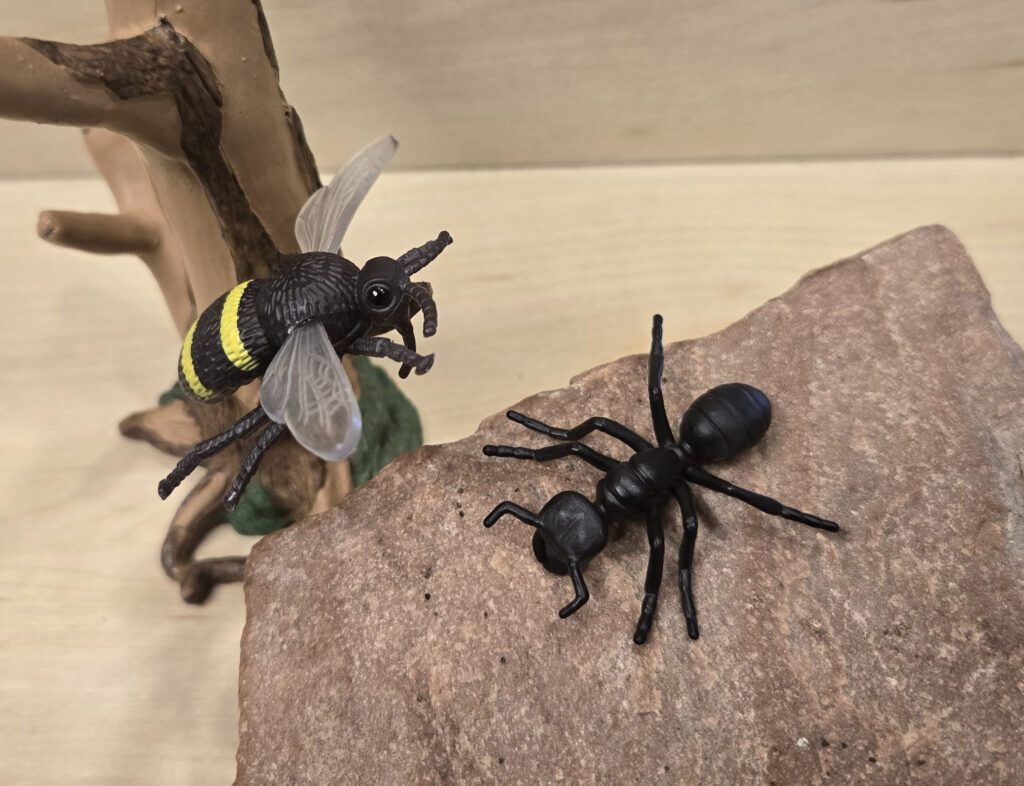
Like the Safari TOOB, Mojö’s collection of mini creepy-crawlies probably caters best to insect specialists and completists, or for parents of young children interested in nature.
Disclaimer: links to Ebay and Amazon on the AnimalToyBlog are affiliate links, so we make a small commission if you use them. Thanks for supporting us!



